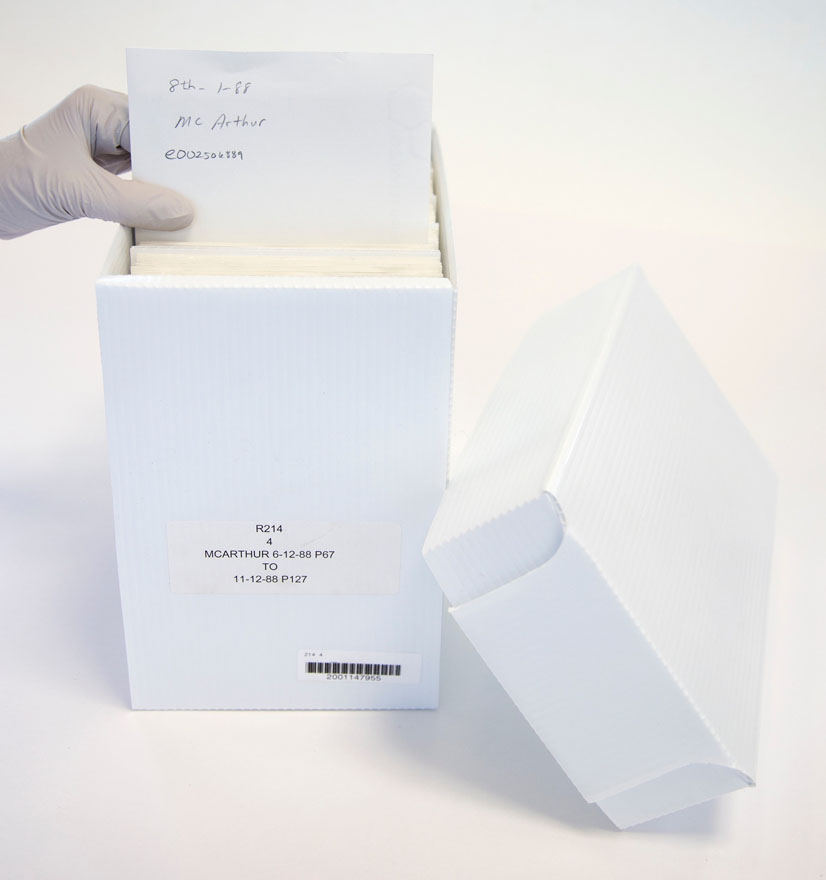Lingua franca – Chapter 4: Preventative care
On this page
- Library and Archives Canada Preservation Centre
- Nitrate film preservation facility
- Storage vaults for photographic materials
- Cold storage vaults
- General care and handling
- Housing for panoramic prints
- Storage boxes for cased objects
- Glass plate storage boxes
- Housing for nitrate panoramic negatives
- Storage and housing for transparencies
- Adhesive-free spacers
- Plastic enclosures
- Paper enclosures
- Custom storage boxes
- Handling of film negatives
- Labelling contents of enclosures
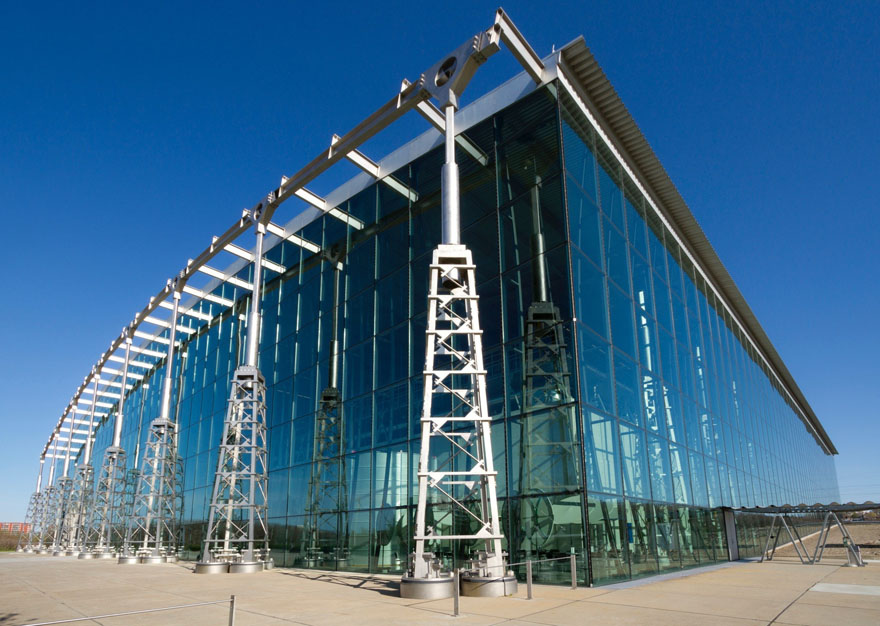
Preventative care
Library and Archives Canada Preservation Centre
Preservation is a core activity at Library and Archives Canada (LAC). A large part of this preservation work is done at the Preservation Centre in Gatineau, Quebec.
The Library and Archives Canada Preservation Centre opened in June 1997. Its facilities are dedicated to the preservation of the country's documentary heritage. This centre of excellence provides collection storage areas with optimum environmental conditions, and laboratories equipped for preservation activities.

Nitrate film preservation facility
Library and Archives Canada's Nitrate Film Preservation Facility was opened in 2011. It is an eco-designed building with various sustainable features, including a green roof, well-insulated walls to reduce energy consumption, high-efficiency mechanical systems to reclaim energy and technology to reduce water use.
This facility stores approximately 5,500 nitrate motion picture film reels and an estimated 600,000 still photographic films.
There are 20 cool vaults kept at +2°C, 25% RH and 3 acclimatization vaults kept at +10°C, 25% RH.

Storage vaults for photographic materials
At Library and Archives Canada, currently there are 48 vaults measuring approximately 350 square metres each and housing a variety of archival records and publications, in four different environments. The vaults are designed to protect documents by eliminating potential threats, by using a sophisticated fire detection and suppression system. Materials inside the vault are carefully controlled to maintain a contaminant-free environment.
There is one main vault that houses photographic materials, mostly black-and-white photographic prints, glass plate negatives and cased objects. Other photographic materials are stored among the many vaults. Library and Archives Canada has the largest photographic collection in North America, with approximately 30 million items.
Photographs in the main vault are stored in boxes on mobile shelving at 18°C (± 2°C) and 40% RH (± 5%).
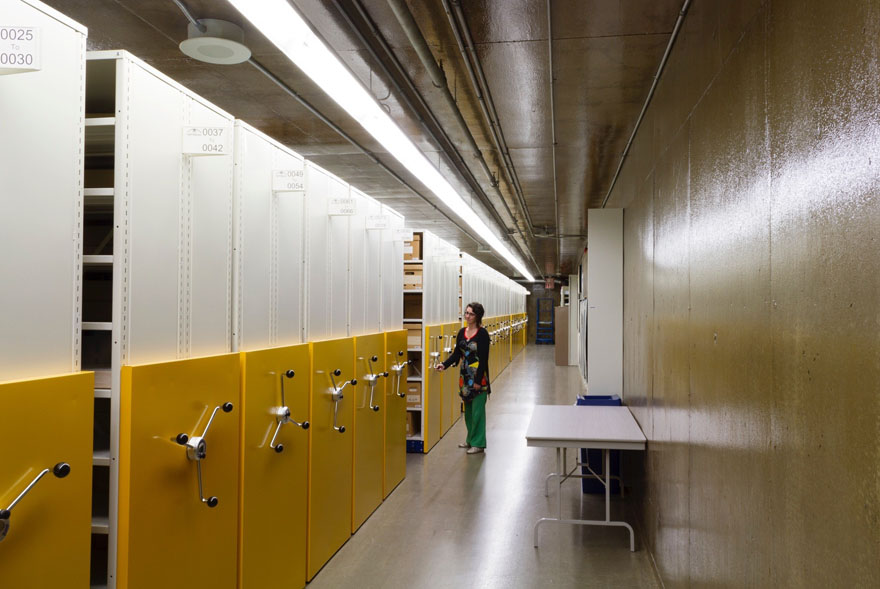
Cold storage vaults
Library and Archives Canada currently has two cold vaults which are approximately 350 square metres each. These two cold vaults are connected by an interior door. One of the cold vaults has two acclimatization chambers. These cold storage vaults house colour photographic prints, colour negatives and deteriorated diacetate negatives, as well as other collection materials.
The environment is maintained at -18°C (± 2°C) and 30% relative humidity (± 5%).


General care and handling
- Keep food and drink away from working areas.
- Keep working areas clean.
- Keep hands clean and dry when handling photographs.
- To prevent fingerprints, wear gloves such as non-scratching, lint-free microfiber, cotton or nitrile gloves depending on the type of photograph. See Fingerprint.
- If emulsion is flaking use nitrile rather than woven gloves, to prevent the glove from catching on the photograph.
- Important to choose a correct size of gloves. Make sure the glove is tight fitting in the fingertips and in the hand, to prevent possible damage.
- Remove materials that may damage the photograph, such as kraft envelopes; manila folders; glassine envelopes; cardboard, vinyl or polyvinyl chloride (PVC) sleeves; metal fasteners (paper clips); rubber bands; and adhesive notes.
- Photographs should be housed in paper enclosures. See Paper enclosures.
- When warranted, use inert plastics such as uncoated polyethylene or polyester. See Plastic enclosures.
- Plastic sleeves come in several configurations. The L-shaped (sealed on one long side and one short side) is the most useful and the easiest to work with.
- If necessary, use a soft pencil. See Labelling contents of enclosures.

X-ray of Veronica Tennant’s feet, 1976
Credit: Image courtesy of Veronica Tennant, C.C. Prima Ballerina National Ballet of Canada, 1964-1989
Housing for panoramic prints
- Relax rolled panorama prints and store flat.
- Encapsulate them individually in plastic sleeves for easy visual reference and handling. See Plastic enclosures.
- Store them in Coroplast® boxes with Velcro® fasteners and twill fabric ties.
- Leave brittle or difficult prints rolled and store them in a box separately from flat prints, until it is possible to have them relaxed.
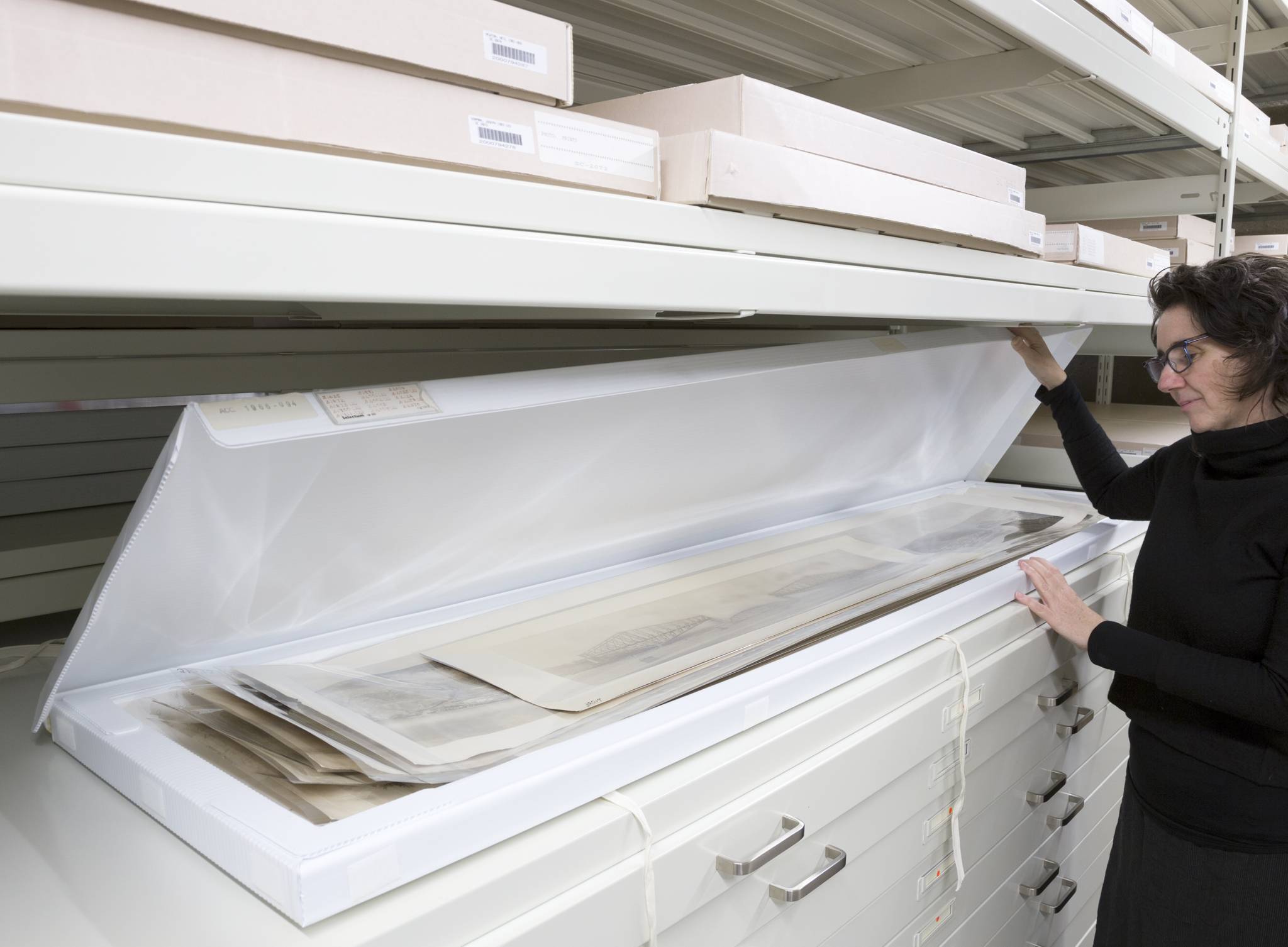
Storage boxes for cased objects
Storage boxes made for cased objects contain minimal adhesive. These custom-made Solander storage boxes use unbleached cotton muslin, twill or cotton tape ribbon, Ethafoam® and silver cloth, which scavenges oxidative gases as they enter the box.
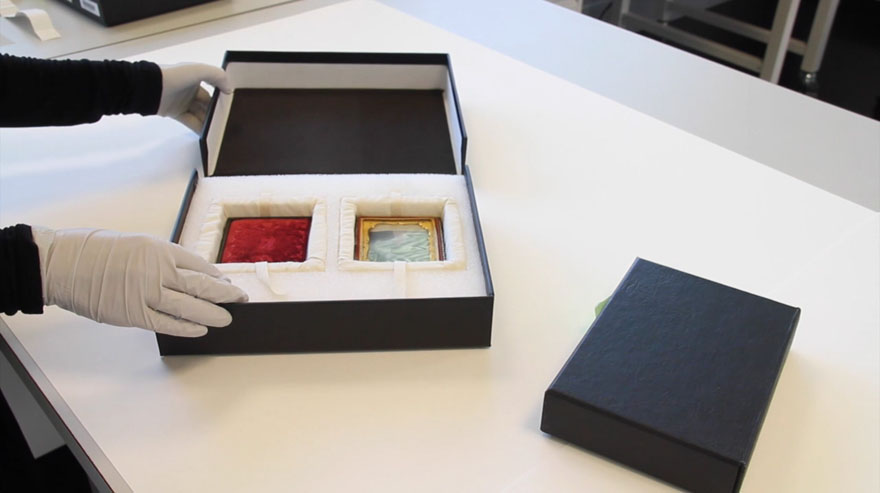
Glass plate storage boxes
Glass plates are stored in Coroplast® suspension boxes. They have a spring-loaded bottom, which acts as a cushion to diminish any unexpected handling movements.
Housing for nitrate panoramic negatives
- Use nitrile gloves when handling nitrate.
- During processing, store nitrate negatives in a separate, well-ventilated area (such as a fume hood).
- Segregate nitrate negatives from the collection because they produce destructive chemical contaminants and corrosive gasses and can degrade the surrounding materials.
- Do not house in polyester or any other type of plastic. Plastic does not breathe and, as the negative deteriorates, the gasses cannot escape. The result is further accelerated deterioration.
- Use paper and board materials that meet ISO 16245:2009 and ISO 18916:2007 (Photographic Activity Test).


Storage and housing for transparencies
- Sleeve colour materials individually.
- Segregate any colour prints and negatives from the other parts of the collection and place in cold storage. See Cold storage vaults.
- Place colour transparencies into plastic sleeves or preservers of the appropriate size with the emulsion side down. Sleeves must not contain polyvinyl carbonate (PVC). See Plastic enclosures.
- Label each plastic sleeve using a permanent black marking pen. See Labelling contents of enclosures.
- Place sleeves into plastic vertical files or expandable folders.
- Use Coroplast ® containers, which can withstand the temperature in the cold vaults.

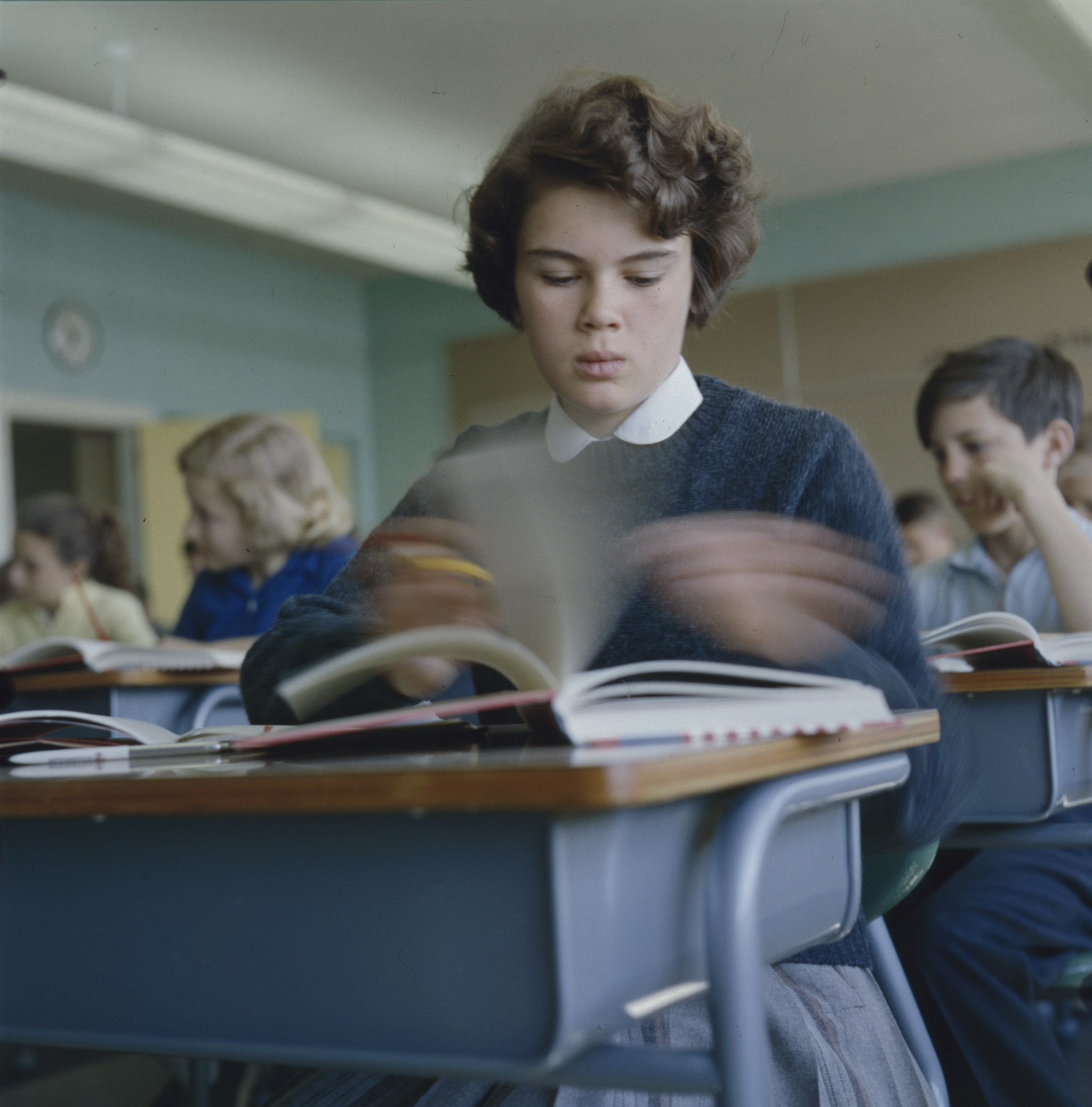
Credit: Gar Lunney
Adhesive-free spacers
Adhesive-free spacers are used to position photographic albums / photographs in a storage box. These spacers prevent movement and may provide structural stability as well.

Plastic enclosures
Plastic enclosures (uncoated and unplasticized polyester and polyterephthalate film, such as Mylar® Type D or Melinex® 516) are often used to store photographic material. Using these types of enclosures allows for visibility but may increase exposure to light. The enclosures are nonporous and act as a buffer when in contact with other materials. They carry an electrostatic charge, which can be detrimental to frail objects.

Credit: Robert Taillefer

Paper enclosures
- For stability of paper materials follow these two standards: ISO 16245:2009 and ISO 18916:2007 (Photographic Activity Test).
- Photographs should be housed in acid-free and lignin-free, both buffered and unbuffered neutral, pH 7 envelopes.
- Contemporary colour material does not use buffered envelopes.
- Prints mounted onto secondary supports of poor quality, and deteriorated film-base negatives use alkaline buffered pH 8.5 envelopes.
- Individually sleeve one photograph per envelope.
- If necessary, sleeve no more than five prints of same size into one envelope.
- Completely enclose the photograph within the envelope. It should not be hanging out of the envelope.
- Individually sleeve mounted prints. The hard surface of the board and weight can damage other prints.
- The paper enclosure should be the size of the container, less 1 cm, and not the size of the photograph. However, if the photographs are significantly smaller than the container, you can insert them into smaller paper enclosures and make inner spacers to hold them in the container. See Adhesive-free spacers.

Custom storage boxes
Specialized housing, such as a two-piece telescoping box, is made for photographs and photographic albums that do not fit in pre-made standard housing boxes.
Generally, albums are stored horizontally and one to a container. Spacers are placed around the album and a piece of archival board is placed under the album. Two albums can be housed in one box if they are properly supported and the lid can be comfortably closed.

Handling of film negatives
How to handle a film negative:
- Handle a negative by holding two edges.
- The emulsion side (the matte surface) must never be slid or rotated on any surface.
- If a negative must be moved, it should be lifted by two edges and repositioned.
- A negative should not be held overhead or at arm's length. Use a light table for viewing, but limit viewing to 15 minutes per object.
- If you use a loupe to view a negative, place a sheet of polyester film between the negative surface and the loupe.
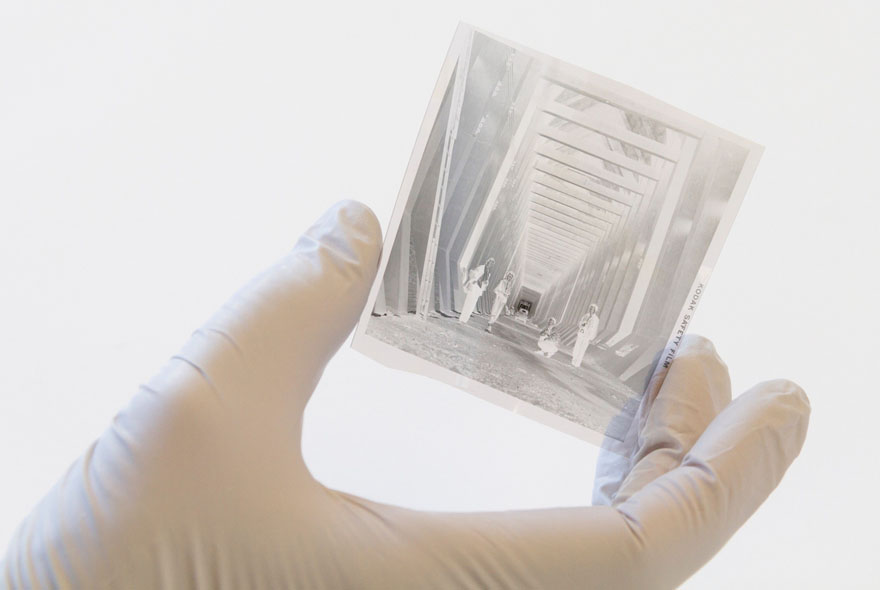
Labelling contents of enclosures
- Stickers should not be affixed onto photographs.
- Avoid using a pen or marker on the back of a print or on a negative.
- If a print has to be labelled, use a 2B pencil to write the archival reference number and the print number in the bottom right-hand corner.
- Write as small and as legibly as possible. Always label prints lightly; excessive pressure or a sharp point on the pencil will leave a permanent imprint on the image surface of the photograph.
- Do not write on the back of a resin-coated photographic paper.
- Record identifying information on the enclosure before the photograph is placed inside to avoid leaving an impression in the emulsion layer.
- Label plastic sleeves in the same manner, except use an approved permanent black marking pen that has passed the ANSI Photography Activity Test (PAT). Never use ballpoint, fountain or felt tip pens. Do not mark the record itself.
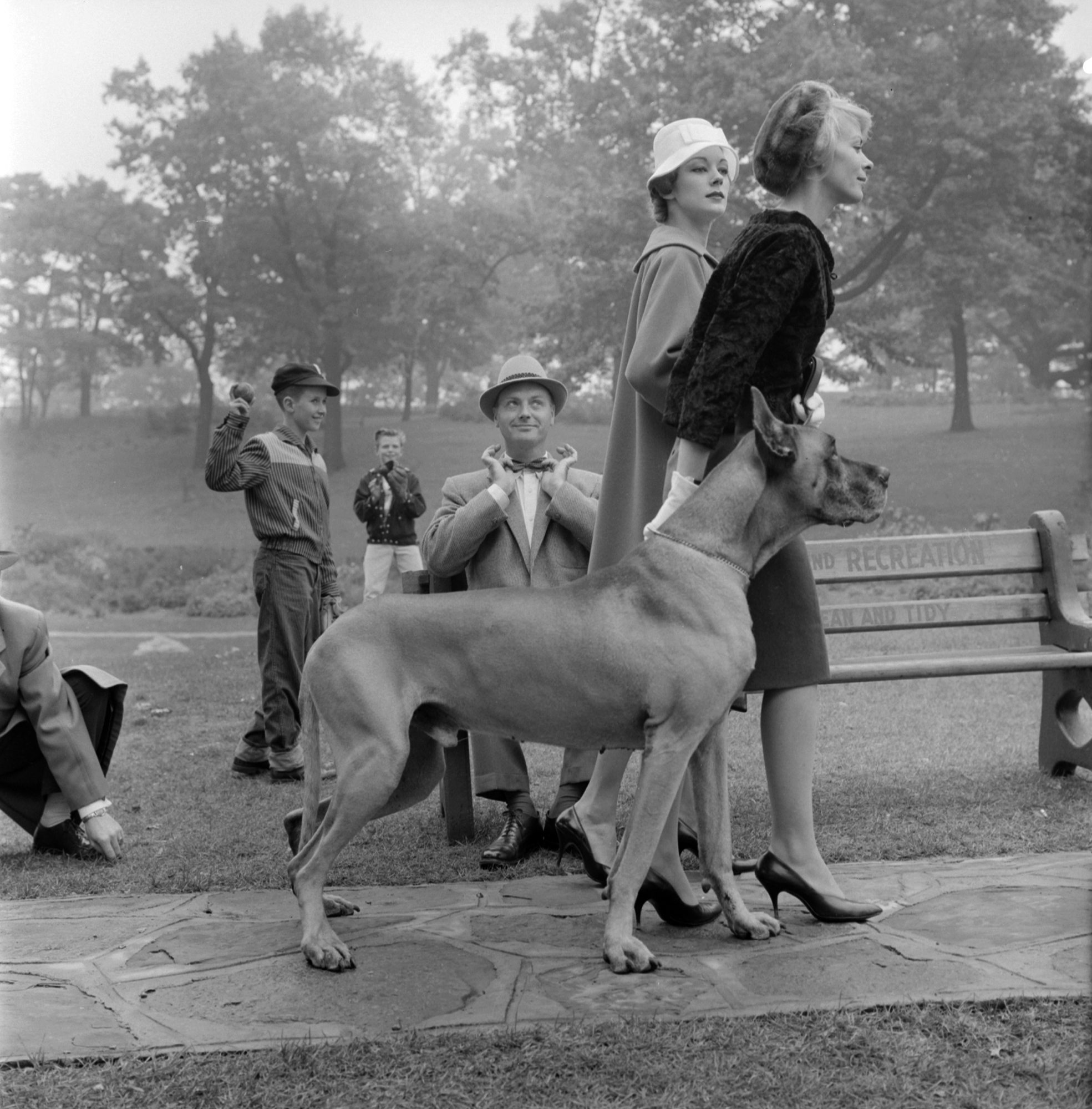
Credit: Ken Bell

